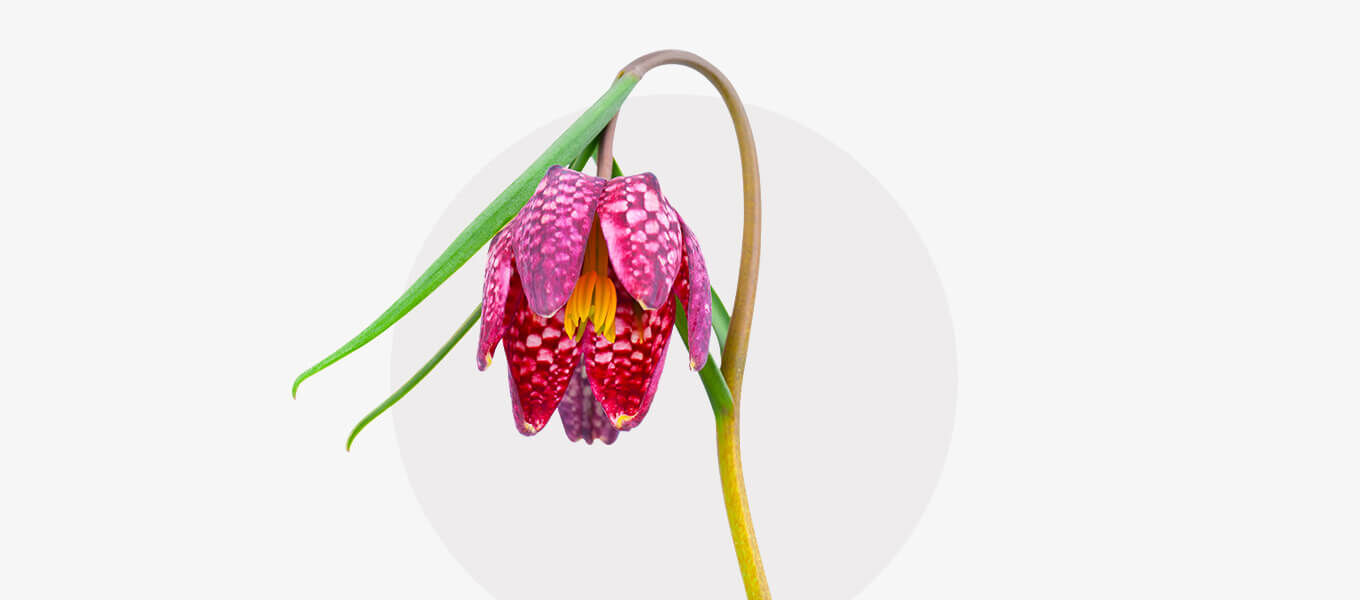Checkered lily (snake's head fritillary)

Have you ever heard of the chequerboard flower? It is a particularly attractive spring bloomer from the lily family that is unfortunately only rarely found in Germany. With a bit of luck, your local Fleurop partner florist will have some stems of this delicate beauty in stock as cut flowers. If not, you can also cultivate the bulbs in your garden.
Flowering
Checkerboard flowers (botanical name: Frittilaria meleagris) grow to a height of 15 to 25 centimetres and bloom between mid-April and early May, depending on the weather. Their chequered patterned, mostly purple or white flowers, which hang down in a bell shape, are particularly striking. The plant is as delicate as it is sensitive: it does not tolerate fertilisation and can only form seeds in agricultural meadows if the first mowing does not take place before the beginning of July. Incidentally, lapwings are also known colloquially as lapwings' eggs, as lapwings are ground-nesting birds and prefer to build their nests in habitats where lapwings also grow. In addition, the birds' eggs are just as strikingly patterned as the flowers of the chequerboard flower.
Threatened with extinction
The natural range of chequerboard flowers originally extended from Normandy in France right across Europe to Romania. In the baroque gardens of the 17th century, the species was one of the most popular ornamental plants, but over the decades it became increasingly less important. Today, chequerboard flowers are highly endangered - mainly due to the destruction of their natural habitats in wet meadows and riparian forests - and may not be picked. The last major populations in Germany can be found in nature reserves in the Sinntal valley in eastern Hesse and in the Lower Seeveniederung near Hamburg. Those interested can take part in guided hikes to the chequerboard flower meadows every year when they are in bloom.
An eye-catcher in your own garden
In principle, anyone can contribute to the preservation of the chequerboard flower and cultivate it in their own garden. When the Frittilaria is in full bloom, it is a real eye-catcher in borders or rock gardens. However, obtaining the bulbs is not easy: they require much more moisture than tulips or daffodils, for example, and cannot be kept in heated sales rooms for long. This is why they are often only available at weekly markets or from online suppliers on the internet. Once you have obtained bulbs of the chequerboard flower, it is important to plant them directly in humus-rich, loosened soil in a well-lit location. It is then important to keep the seedlings moist. If everything goes well, you can enjoy your chequerboard flowers for several years in a row.













